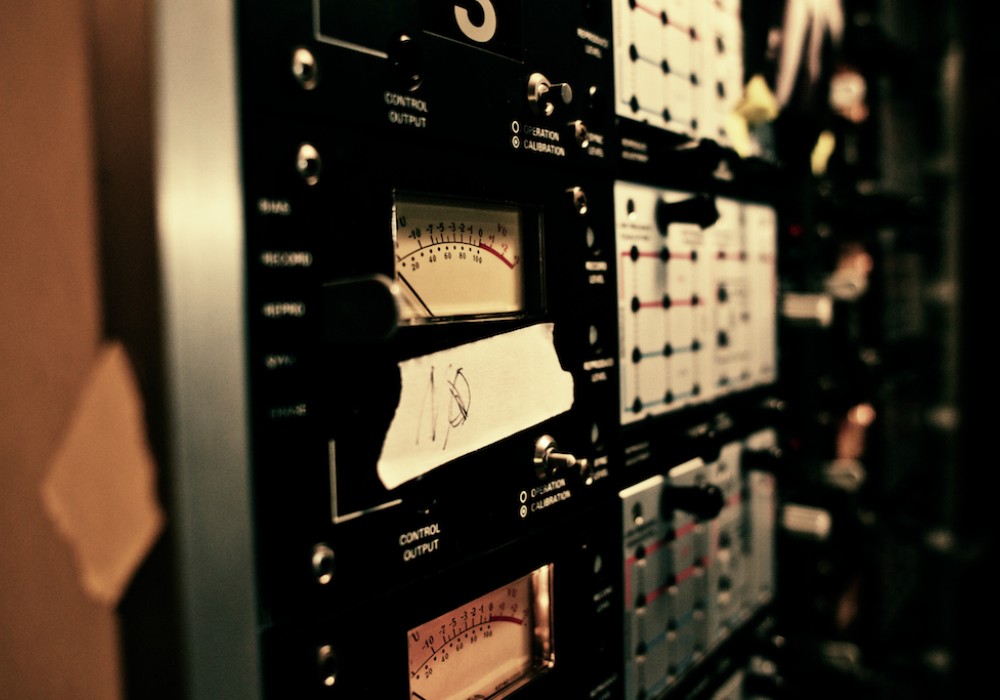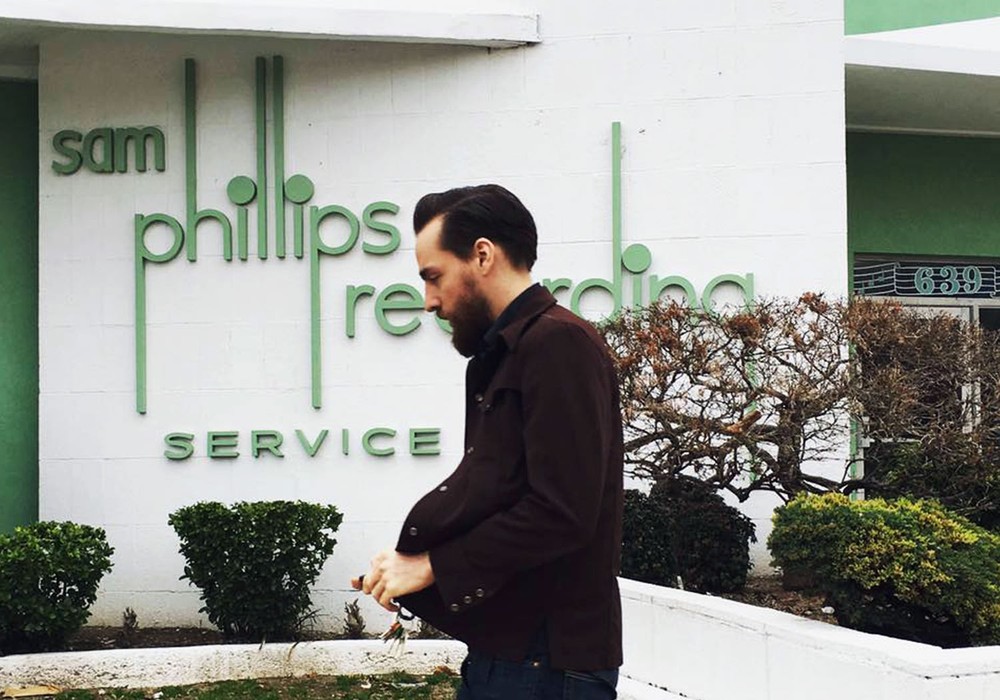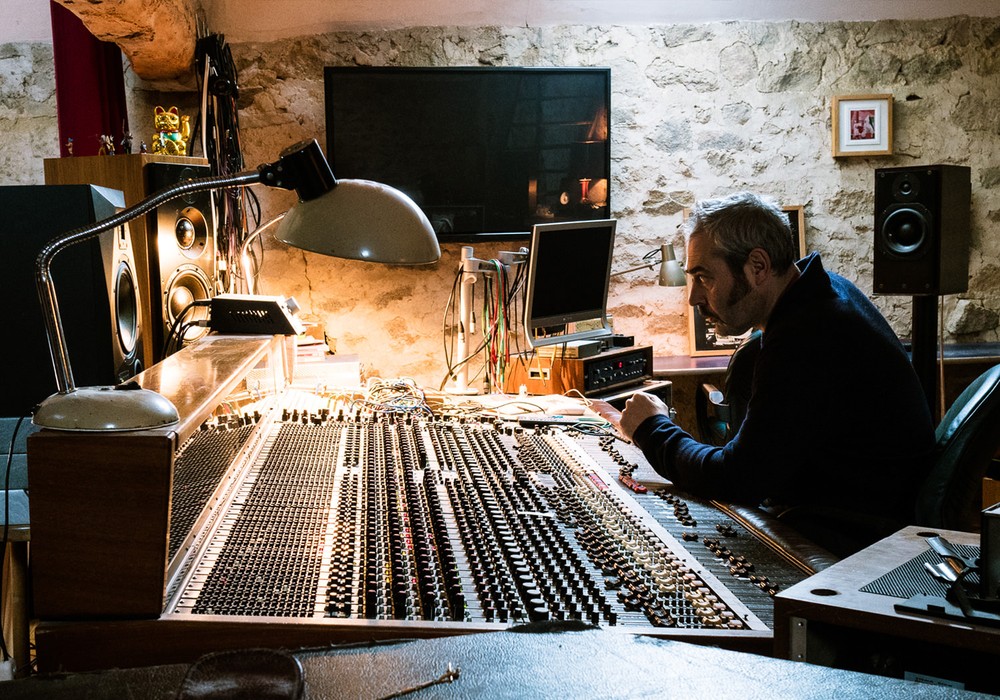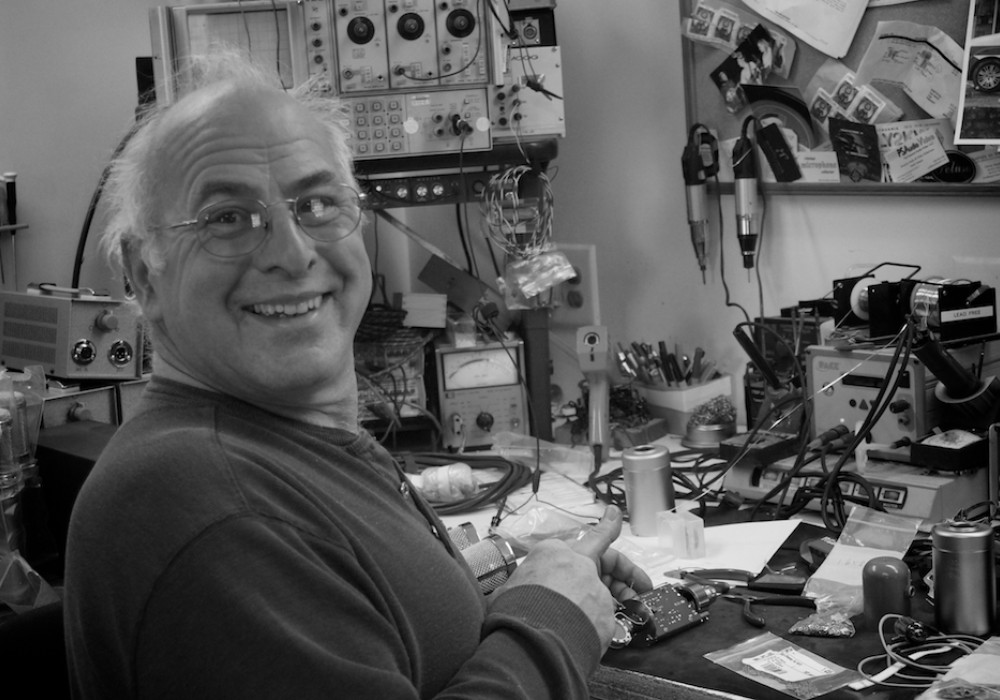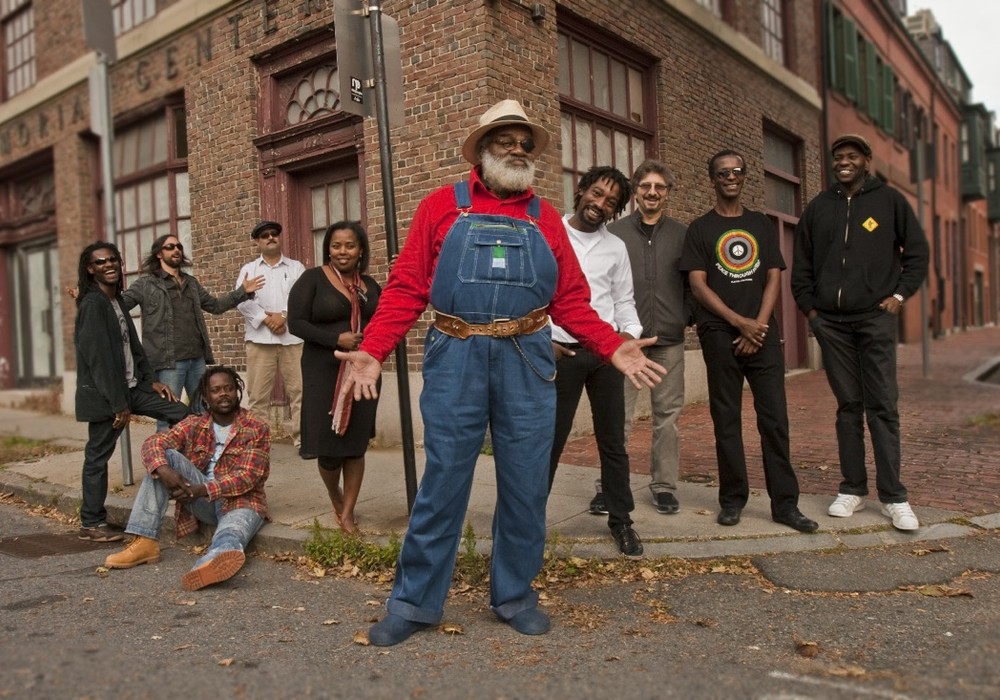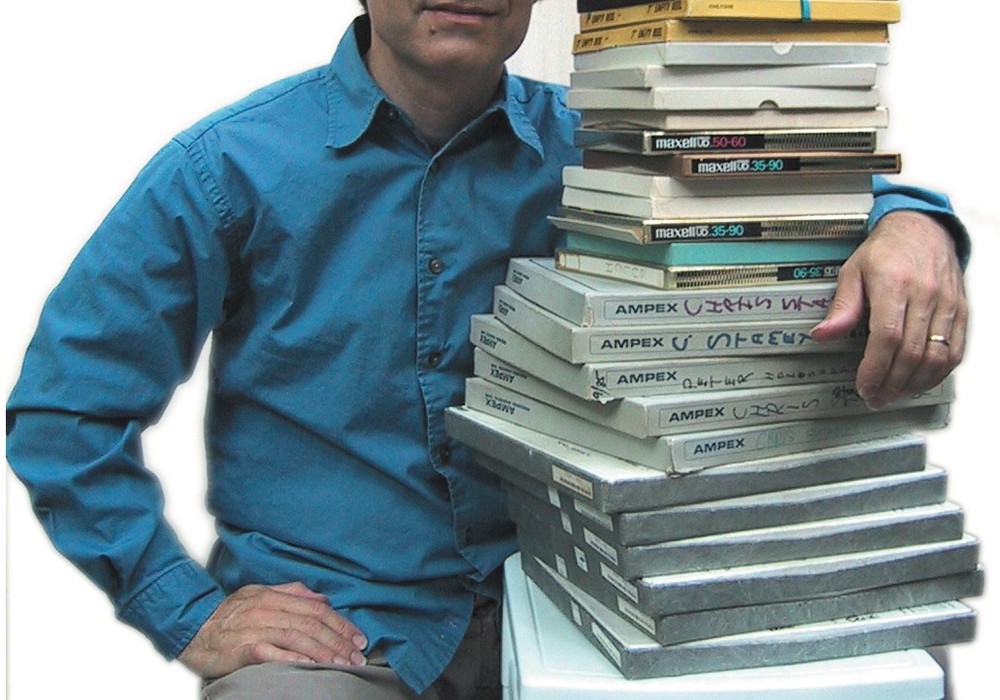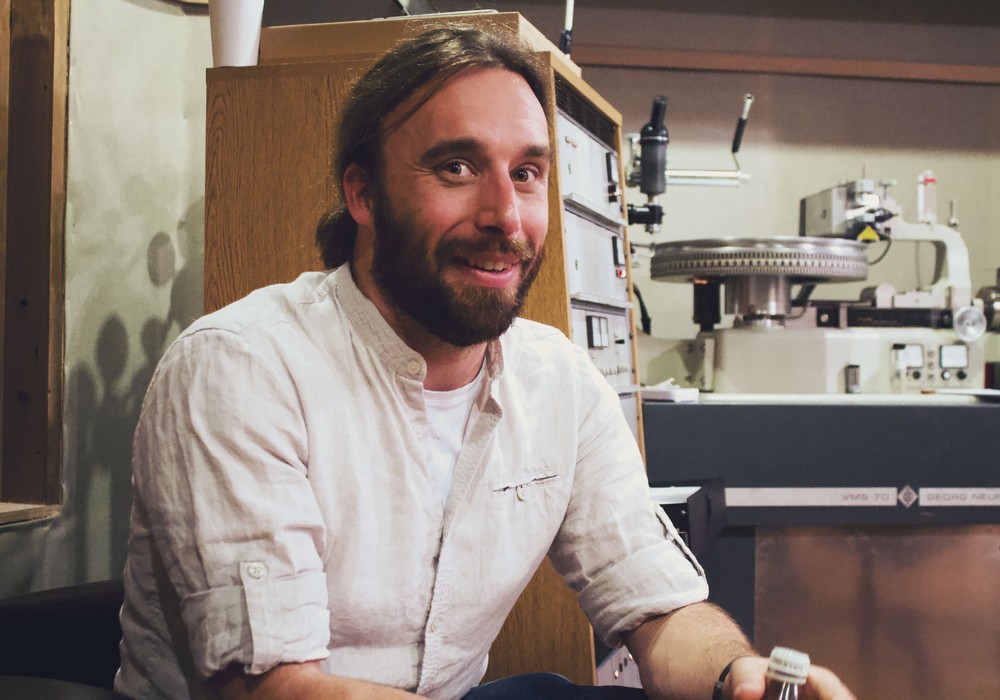I first met Retro Instruments' Phil Moore when he emailed me out of the blue about buying an old tri-band Gregg Labs broadcast compressor I had listed on my studio website. I was reluctant to sell it, even though it no longer worked properly. After talking gear with Phil a bit, he offered to trade it for another tri- band broadcast limiter he owned. Phil drove it up to The Hangar from his home in Modesto, a California central valley town about 90 minutes from Sacramento (also known to music fans as the place Grandaddy was from). A few days later, Phil emailed to let me know he had the Gregg working perfectly. I wasn't really digging the compressor he traded it for though, so he offered to do some repair work in exchange. On his next visit, he left with the compressor and about 10 pieces of broken rack gear — none of which had schematics. Two weeks later he returned them all in perfect working order. He then told me about his idea to start a company that would reissue the classic Gates Sta- Level — his favorite compressor. Three months after that he drove to the first Tucson TapeOpCon with Sta-Level serial number 001 (reviewed Tape Op #55). And now, a handful of years on, he has a collection of "retro" audio products out, including the Powerstrip Recording Channel (Tape Op #82), the 176 Limiting Amplifier (Tape Op #66) and the 2A3 Dual Program EQ (Tape Op #79). But we were really curious where Phil came from...
How did you get started with electronics?
I guess it started when I was a toddler. I used to grab the knobs on the record player, and my dad understood that I had this attraction to amplifiers and things. I was about five when he really knew I was into electronics and sound, so he bought me one of those kits to make a bunch of electronic projects. He would read the instructions while I would connect the wires up. Most parents would probably say, "Don't touch that! You might get hurt!" but he was actually encouraging me to mess around with wires. By the time I was eight I built my first mixing console and I took it to my third grade class.
What year was this?
This was 1972 and '73.
Were you doing tube electronics or solid state?
The first amplifier I had was an EICO HF-20 with a really huge output transformer and a couple of 6L6 [tubes]. The only reason I got into tubes was because that was the stuff people were throwing out. Solid state was taking off and it was like, "Why do we need these big heavy tube things?" I went to a garage sale and a guy sold me this classic amplifier, so I proceeded to shock myself and blow up speakers. The things that amazed me most were the radio stations and the transmitters. We had a station in town and my dad would take me up there. It was 500-watts with five towers right across from the Concord Pavilion [Concord, California]. I met the engineer there. There was a guy playing 45s on turntables and right behind him was this transmitter with these really big glowing tubes. You'd actually see the orange glow on the plates of the tubes modulating with the sound coming out of the console. So when I was 12, I built my first radio transmitter.
You had your own?
Yeah, in my bedroom.
How many watts?
Not too much. It would go around the block.
Which is totally illegal, right?
Yeah. I started off modifying wireless microphones and tearing apart a Mr. Microphone. I was kind of obsessed with putting signals out on the radio, but it never sounded like the big stations. I asked the guy at the Concord station how come it sounded really cruddy and faint, while stuff on commercial radio was huge and full of energy. He told me, "You need a limiter. I've got a pair of Gate Solid Statesman limiters just sitting in my garage. I'll let you have them." They were actually the worst limiters I have ever heard — that's probably why they were sitting in the guy's garage. I wish I'd known how to modify them back then. Now I modify limiters and they sound amazing, but I ended up throwing that pair away several years later. When I was 13, I was trying to start a cable FM station on Concord TV cable. I met this guy, Steve Bryan, and he introduced me to the [Gates] Sta-Level. He brought these Sta-Levels over and it just changed everything. The audio sounded amazing for the first time ever. I've been sold on the Sta-Level since I was 13.
By the time you were 18 you were fully employed in radio?
I had a job when I was 15. I was offered a job that I couldn't take until I turned 16. The day I turned 16 I became a maintenance engineer for this 1000-watt AM station.
And you had no formal training?
Yeah, I did actually. I guess I'm leaving some stuff out. From the time I was eight I had a study guide to get an FCC license, which you can't get until you're 12. On my 12th birthday, I went to the FCC office in San Francisco and took the test for the third class radio/telephone operator's permit, which allows you to operate a radio station.
Did you pass?
Yeah. I got my license when I turned 12. My high school, Clayton Valley High School, had KVHS — a 5000-watt transmitter, behind glass outside the studio door. There were some classrooms next to the tower there. The teachers couldn't watch movies because the radio station would bleed into the amplifier of the projector. They would have to turn off the station so the teachers could play their films. From the time I was eight, I would go hang out at the high school. When you're that young, the kids in high school are kinda mean — they would throw my bike in the dumpster and things like that. I was hanging out at KVHS as much as I could. I'd watch what they were doing and how they operated the station; and I'd help out when they would let me. The instructor was very engineering intensive — they built their own mixing console from digital parts before those were really being used for consoles. They built a digital transmitter remote control and they moved the transmitter up to a hilltop. There were these guys there; one guy went to work for National Semiconductor Corporation and the other guy for another big technology outfit. They were really smart, for high school kids, and I got to hang out and watch them put stuff together. I was watching all this and learning. By the time I actually got into high school I was kinda bored with the school's radio station and was looking for other things. I was hanging out at the commercial local stations. I'd help take out the trash and, if they let me, I'd watch what they were doing. When I was 16, I was so ready to get into the field and get a job, so I worked in San Francisco.
Did you finish high school?
When I was a junior, I went to a different school where you attend once a week and they pile a bunch of homework on you — I completed that. When I was 17, I moved to Stockton to be the chief engineer of an AM/FM combo station. From there I was the chief engineer for various radio stations around the Bay Area until I owned my own, which was my dream as a child.
How old were you when you bought your first radio station?
I didn't buy it — I created it. I filed an application in Santa Rosa for a new frequency and through a miraculous chain of events it all came together in 2001. This was at a time when people were spending millions of dollars on stations. It was a miracle that I was able to put mine on the air.
What kind of station was it? What was their programming?
It was an FM station, 3000-watts; the antenna was mounted in a tree up on a 1600-foot hill in Cloverdale and it would shoot down the valley. You could hear it from Novato all the way up to Willits — really good coverage. All of this from a Douglas Fir tree in somebody's backyard up on a hilltop! I put the station together with stuff that I had collected over the years. We started out as a classic rock station but that was kinda tough to sell. After a year we switched it to hip- hop and it was huge, but it wasn't necessarily what I wanted to be playing. I wound up selling it and taking some time off to think about what I really wanted to be doing. I had five Sta-Levels when I started that station and when the classic rock choice didn't make it I had to sell them all. It was awful. I decided to build a Sta- Level for myself and I thought, "Everybody seems to like these." I actually set out to build an exact replica of the Sta-Level. It came together and I put it out on the market. It sounds fantastic and I still love it — 30 years later.
There is no market for selling Sta-Levels to radio stations anymore. You're now selling all your gear to recording studios and recording engineers.
Yeah.
Was that a pretty natural transition?
I was kinda surprised that it caught on in recording circles. It's just so old and antiquated. I've listened to every compressor that I can get my ears on. I've listened to a lot of compressors and limiters and nothing that I have heard does what the Sta-Level does.
Then you built the 176 Limiting Amplifier, based on Universal Audio's design. Can you tell us a little bit about that product and the process of designing it?
I had just introduced the Sta-Level at TapeOpCon 2006 and my friend David Piechura made the suggestion that I build a 176 and I went right to work on it. The 176 is the best selling Retro product. It was critically important to get the sound of the original transformers, and then I added some features to get more flexibility out of it. I love the energy of Bill Putnam's tube compressors.
The next unit was the 2A3 Dual Program EQ. I heard Tape Op contributor F. Reid Shippen had a bit of a role with that.
I read a Tape Op review that Reid did on another Pultec clone and knew that he was a tough customer to please. I thought he would be a good choice to get feedback from on a prototype I was working on. I sent him a rough prototype of a single channel unit. He liked it, but it really didn't sound like a Pultec. After several rounds of him sending his Pultec EQP-1A3 to me and me sending my 2A3 to him, it was getting better but it was still not right. We were getting close but still no dice. Then Tom and David at Cinemag made a special interstage transformer that makes the Retro sparkle like an original. The magic is in the transformers! Anyone can just copy a classic circuit. At Retro Instruments we try to make products that sound as good, or better, than the classics, and make them usable in modern recording situations.
You now have the Powerstrip Recording Channel. What's the scoop on that box?
Everyone wanted a mic preamp from Retro. I have prototyped just about every classic tube console pre, listened to several that I own and tried some new configurations with numerous new and classic transformers. I recorded tracks of each and compared them endlessly. My favorites turned out to be the Pultec Mavec, Redd 47, RCA OP-6, Gates Dynamote and the Collins 12Z. I ended up with my own, a custom blend of circuits to get the flexibility and fullness I was looking for. Still, I felt that a good mic pre just wasn't enough, so I added an EQ and a compressor that would bring out all of the detail of the performance. There are also instrument and line inputs, a re-amp output and an instrument pass thru. It is everything I could squeeze into a modestly-sized package for my attempt at a desert-island box.
What's next for Retro?
I am big on customer support and I plan to focus on that. Retro is growing at a good pace and just brought on David Piechura to handle sales and marketing. We have no shortage of ideas, we just need to decide in what order we should develop and how to release them. We have a "plug-in" this year that will surprise people. I am always considering new products that will round out our product line. My dream project is a tube mixing desk with a built in tube tester. Not that we would sell many, but it would have that sound. That is why I love this gear.
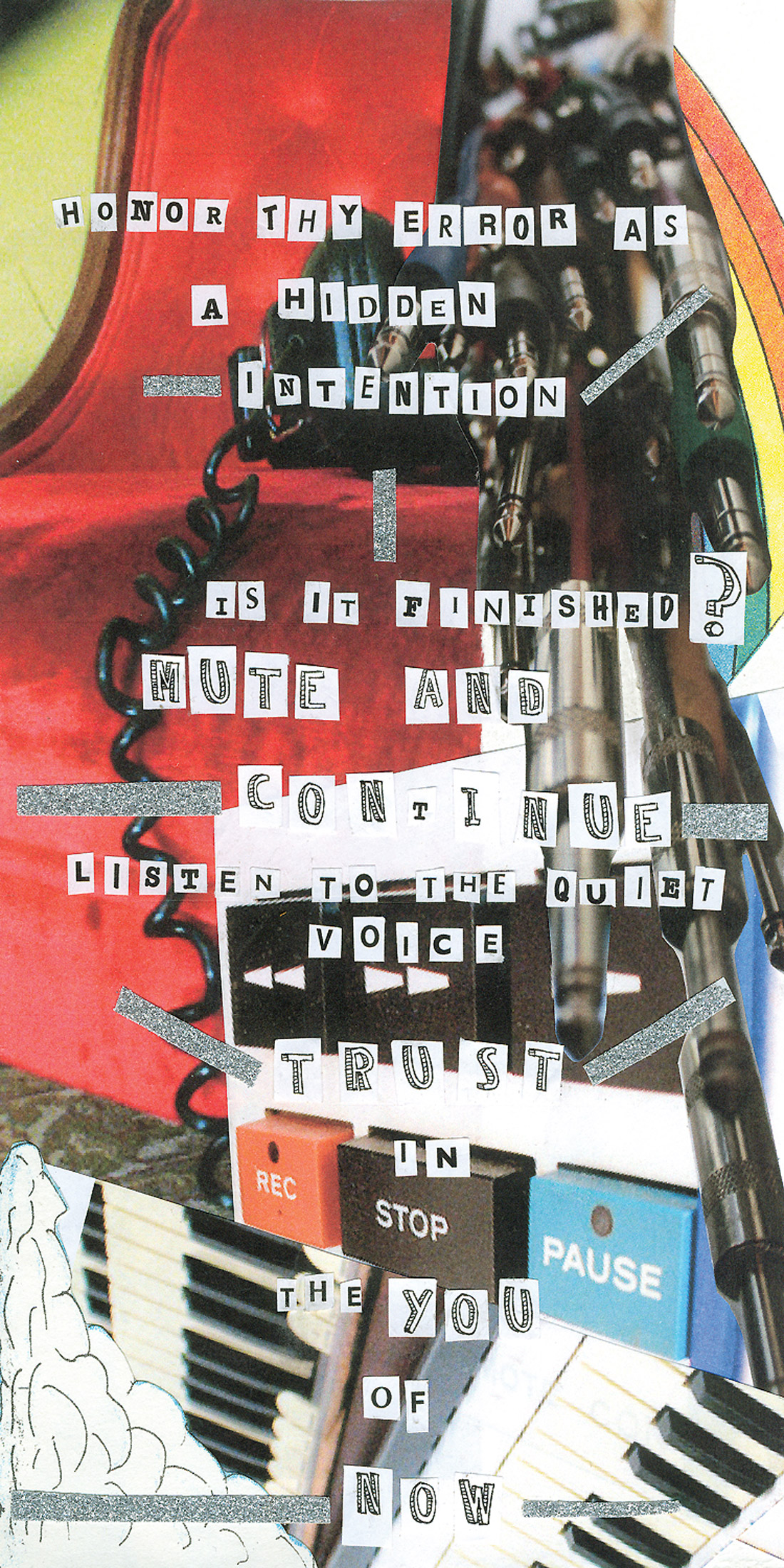



_disp_horizontal_bw.jpg)
